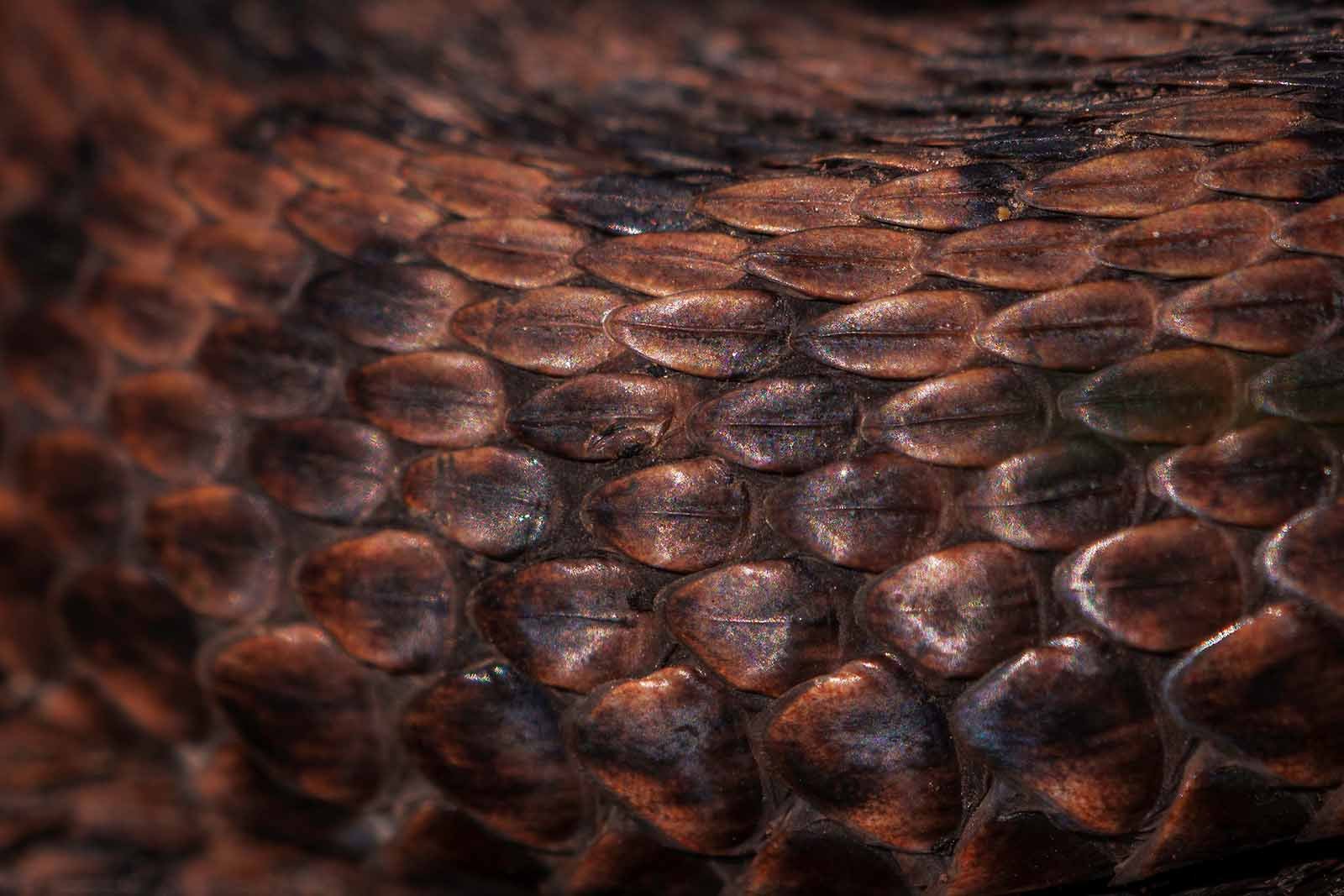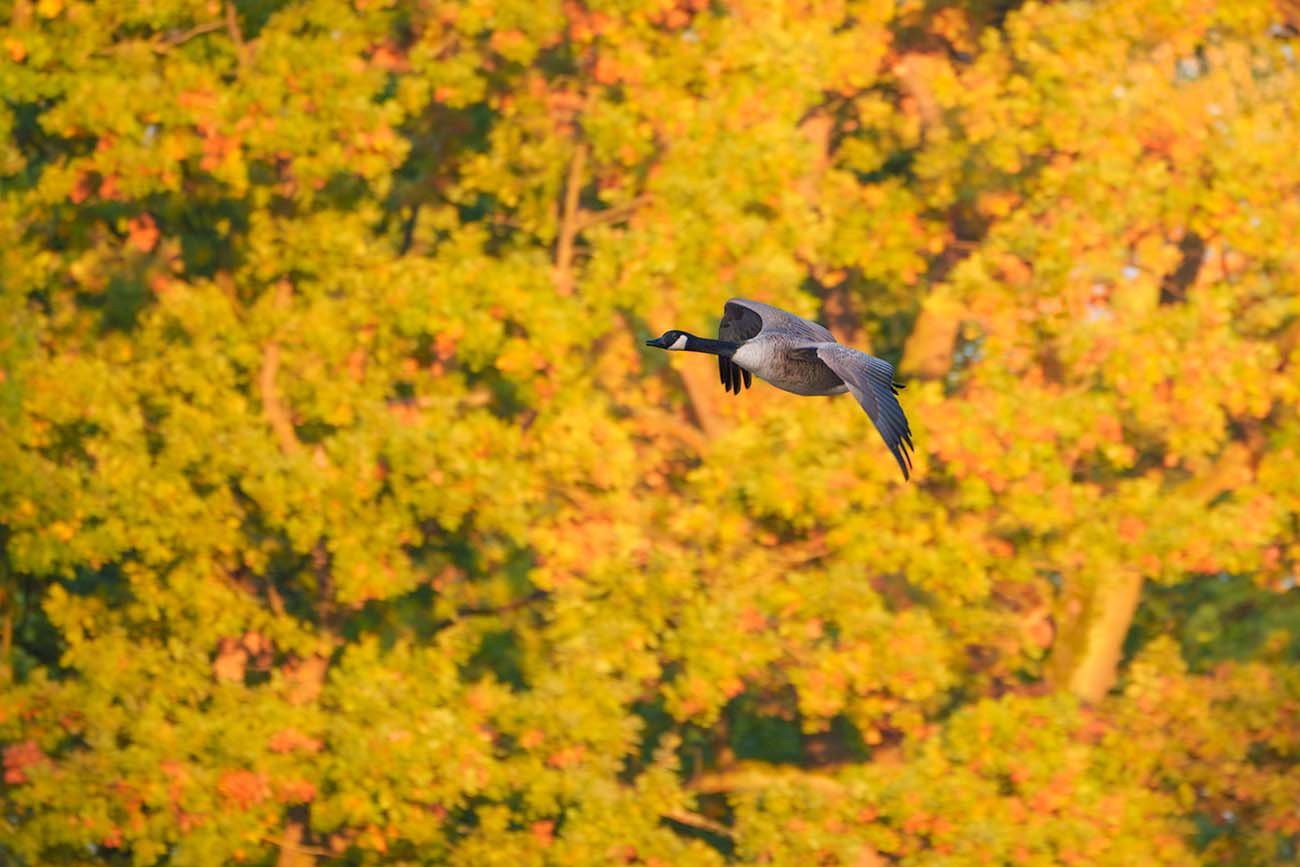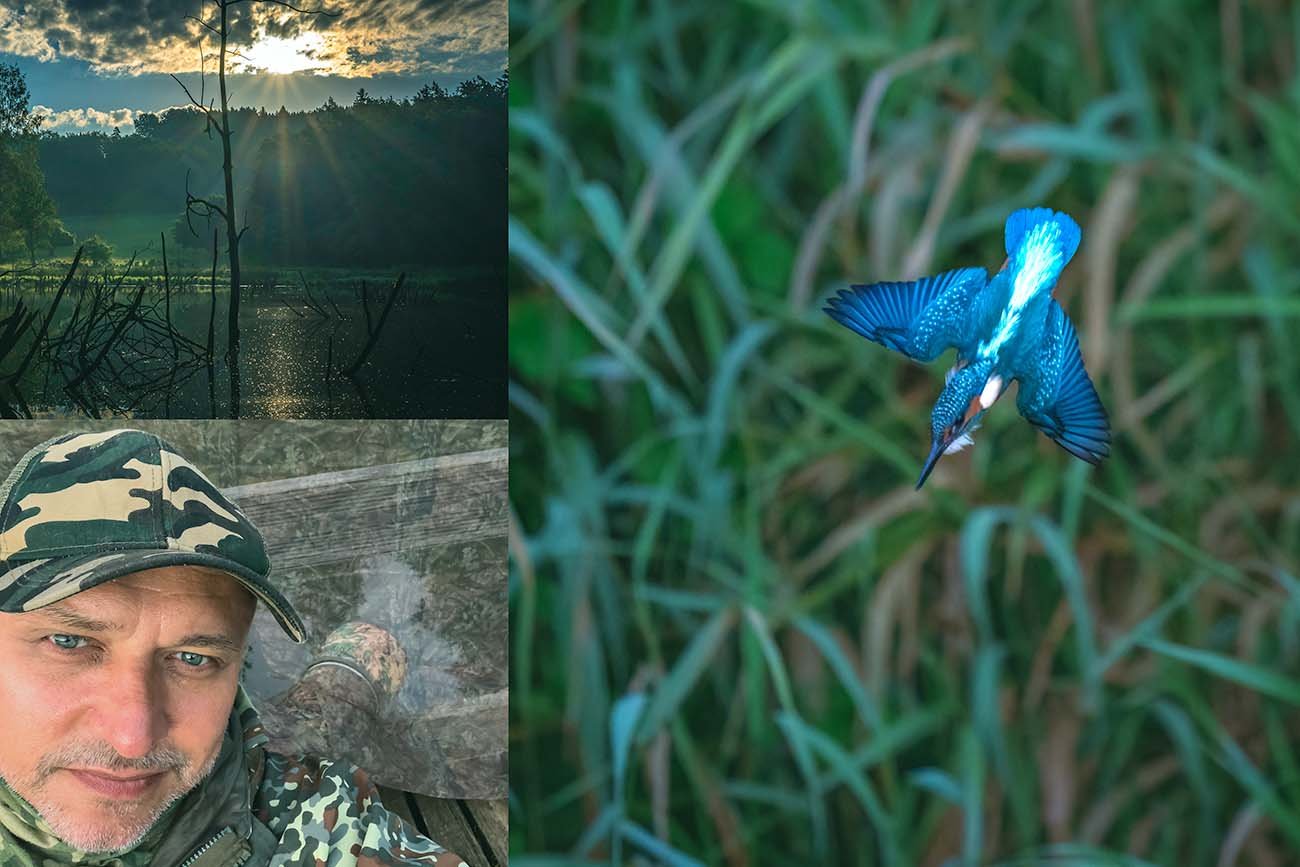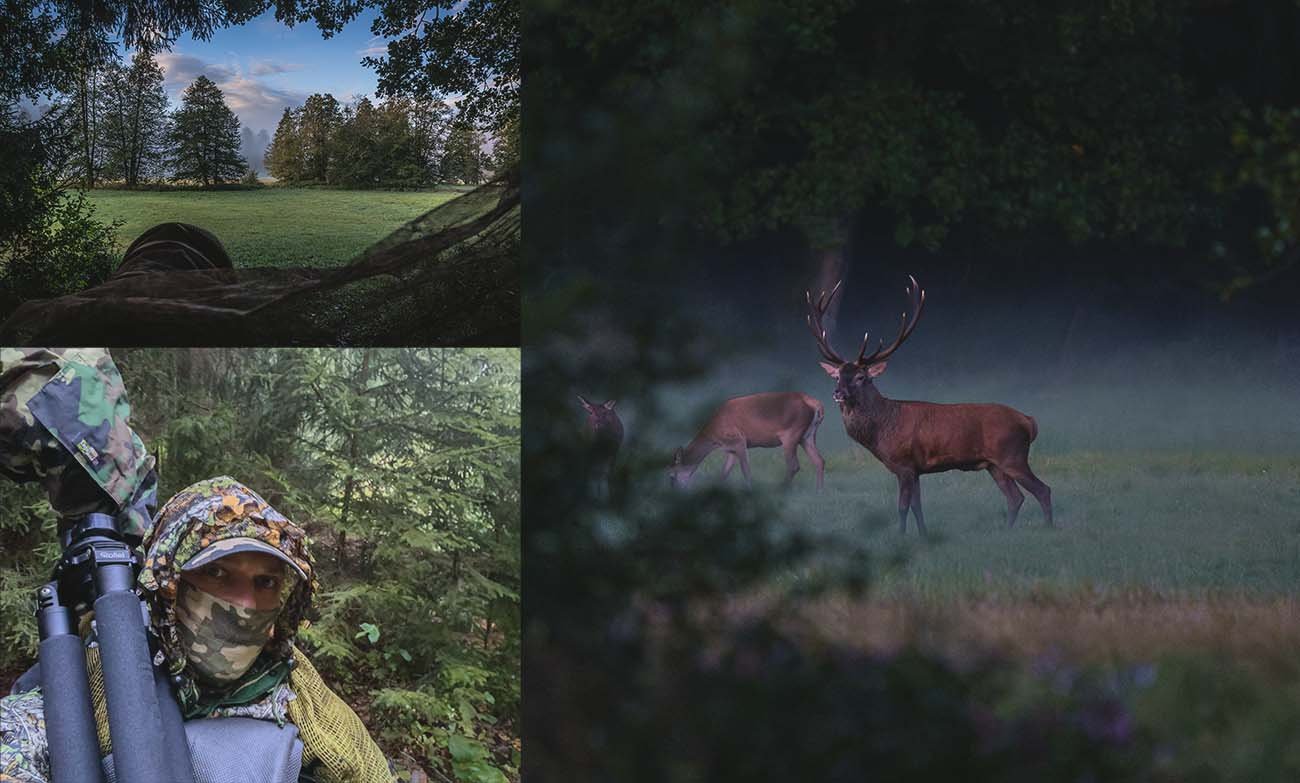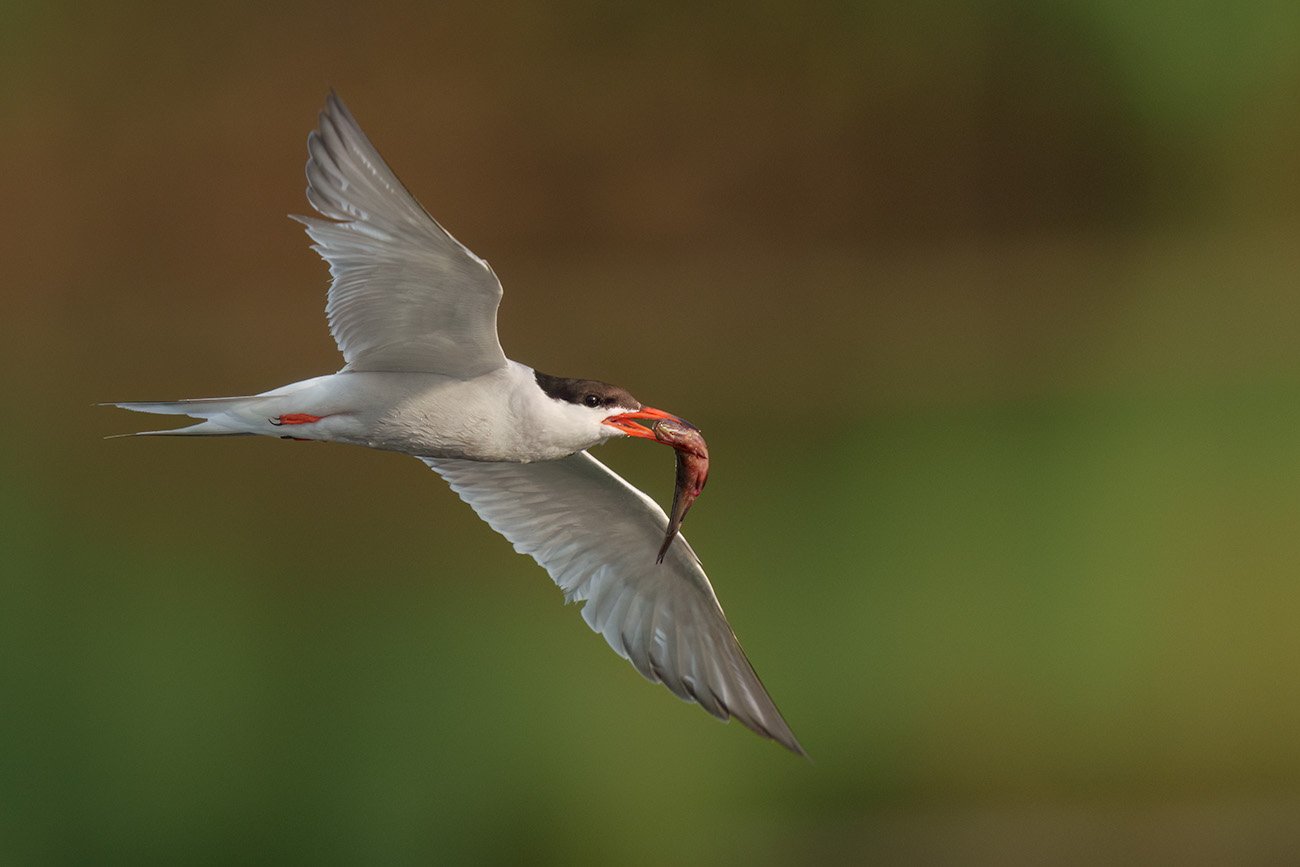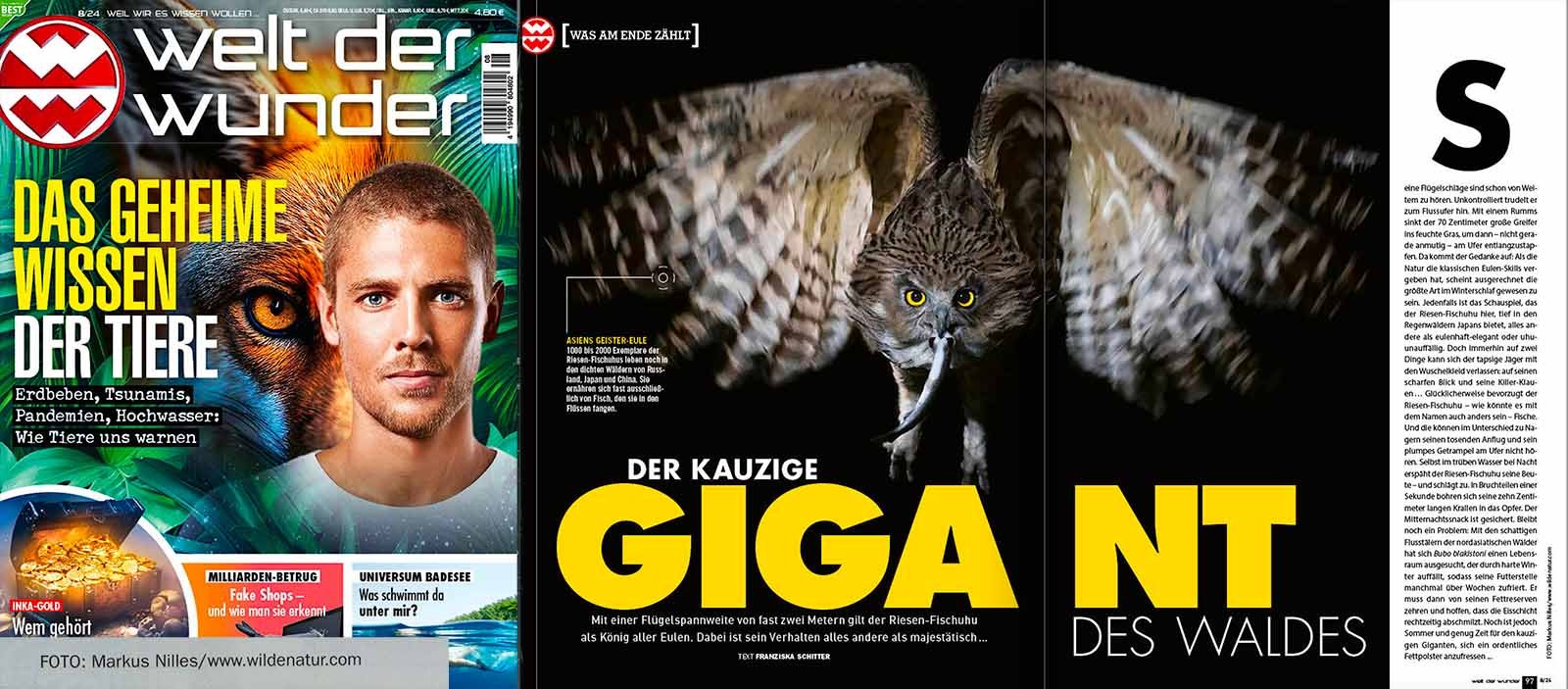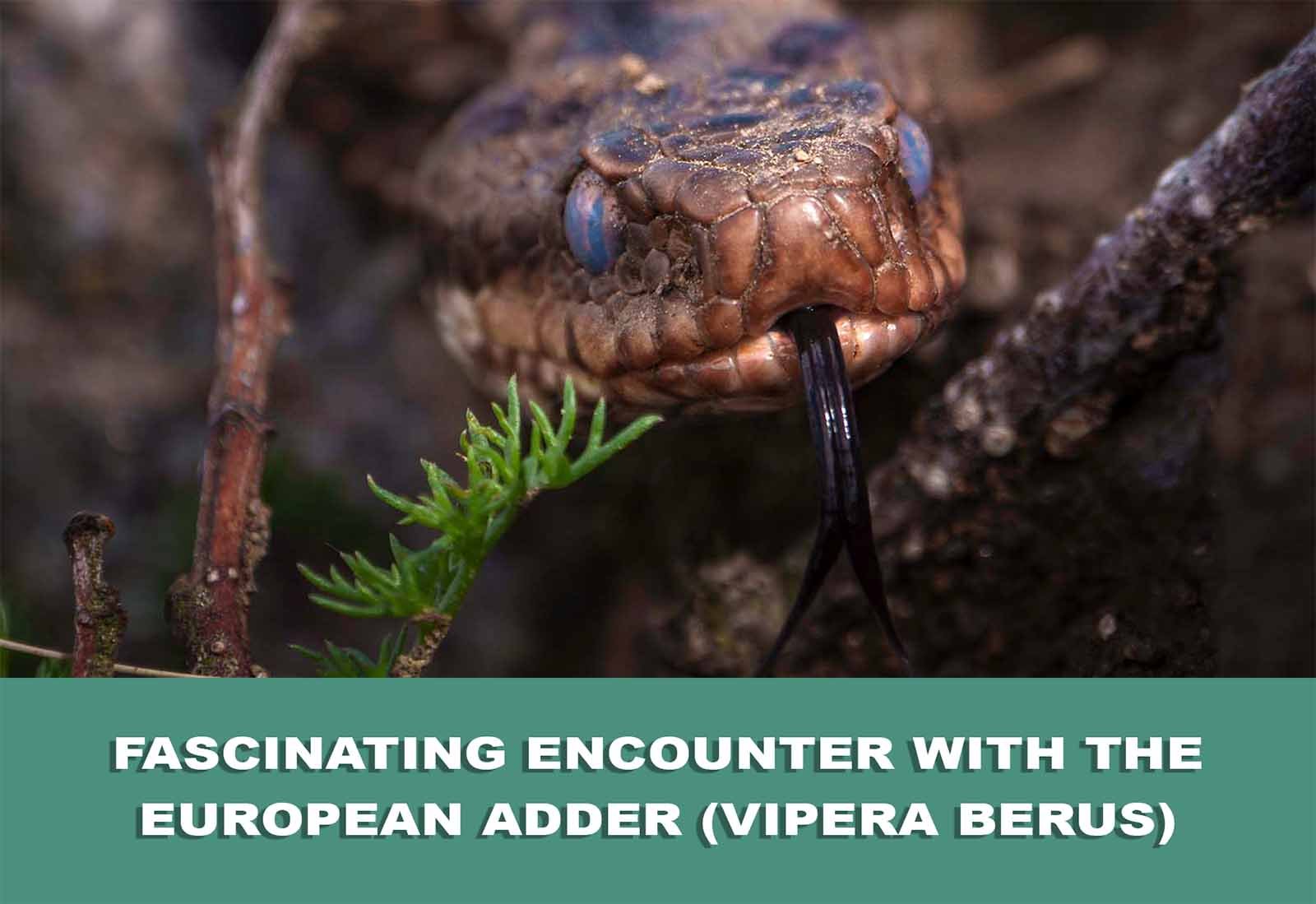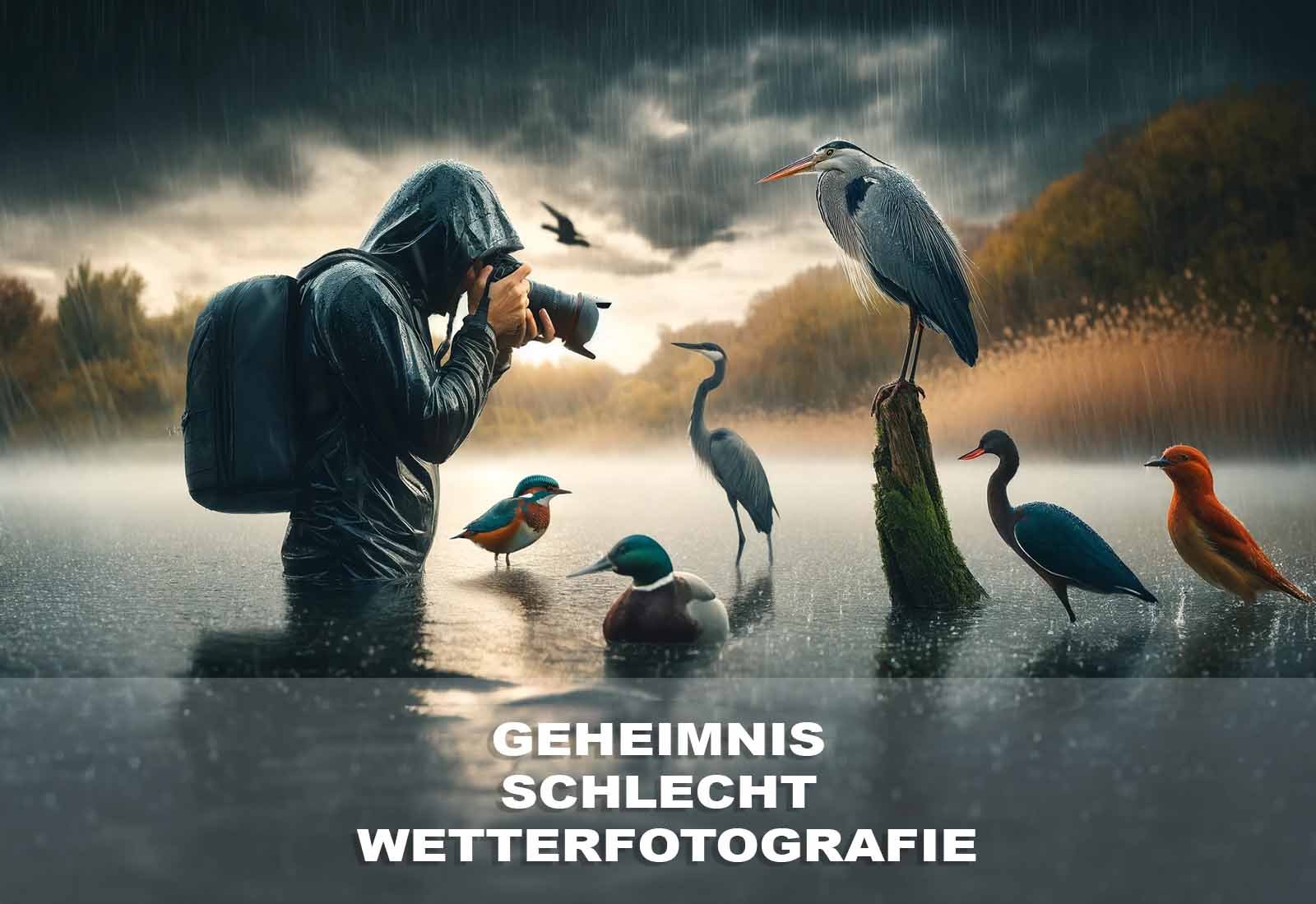Fascinating encounter with the European adder (Vipera berus)
The common European adder (Vipera berus), affectionately called Otti by us. - Sony a6700 + 1.4xTC + FE 100 - 400 mm f4.5/5.6 - 560 mm f8 - ISO 160 - 1/1000
Insights into the World of a German Rare Snake
When the alarm clock rings and before the first rays of the day penetrate through the windows, a new adventure usually begins for us nature photographers. Such a morning is always full of anticipation and expectation for me, especially when the goal is a rare and fascinating animal like the Common European adder (Vipera berus).
Early Morning Preparation and Travel
My journey begins early, before the city fully awakens. With my photo backpack full of equipment and a goal in mind, I leave Nuremberg this morning and head out into the nature of the Upper Palatinate in Bavaria. The anticipation of my encounter with the Vipera berus drives me forward.
Unforgettable On-Site Experience
Arriving at my destination, I prepare myself. Equipped with a rainproof camouflage jacket, high hiking boots, and my camera gear, I get ready to meet the viper. For years, I have been visiting this place where they regularly bask in the sun.
My wife and I named the female viper "Otti". We discovered this fascinating reptile a few years ago and have been checking on her in the spring whenever we are in the area. Vipers have territories between 1 and 2 hectares, so the likelihood is high that they have fixed basking spots and can be observed at the same places each year.
This time, my goal is to create a slightly different photo series than in previous years.
Fascination with Snakes in Germany
Adder (Vipera berus) - Sony A1 + Tamron 28 - 75 mm f2.8 - 75 mm f8 - ISO 125 - 1/400
Photography Details and Knowledge of the Animal in My Viper Shots
Well camouflaged, the common European adder (Vipera berus) lies on its sunbathing spot
To capture the Vipera berus in her natural environment, I set the camera to burst mode, single-focus point (SPOT-S) to focus through the tall grass, and the aperture is wide open to let in enough light. The viper (Vipera berus) is usually a very calm and deliberate-moving animal, especially when she has not yet reached her optimal body temperature. Like other reptiles, vipers are ectothermic, meaning their body temperature depends on the ambient temperature. The optimal body temperature of a viper, at which she is most active, and her bodily functions work most efficiently, is usually between 25 °C and 30 °C. This temperature allows her to hunt, move, and digest effectively.
For us photographers, this means a longer shutter speed is possible to get enough light onto the sensor and use low ISO values, resulting in less noise in the images. If the lighting situation is insufficient, this is an advantage for us nature photographers.
Lying on the ground with my telephoto lens, I keep the camera steady while photographing her dragon-like scales and elegant body. With the Sony 100-400 mm f4.5/5.6 telephoto lens, I can get close to the viper without disturbing her and capture details that are typically hidden from the human eye.
Camouflaged in brown underbrush, the copper-brown snake is almost invisible. She spreads her ribs wide to warm her body better and flicks her tongue. Snakes flick their tongues to explore their surroundings and perceive chemical signals. Their split tongue picks up particles from the air and transfers them to the Jacobson's organ, where they are analyzed. This helps them identify smells, determine the direction of odor sources, and gather information about prey, conspecifics, or dangers.
After the sun has shone intensely on her, she first crawls under the leaves of a nearby plant. After a while, she slowly slithers back into her hiding place under a pile of stones. These provide her with shade, but the stones also continue to give off the warmth they have stored over the past few hours.
Image Development and Impressive Results
After extensively photographing “Otti” (our nickname for the European adder) over an extended period, you can view some final images here that showcase the adder in all its glory. These images depict the adder during and after shedding its skin.
Fascinating Details: Close-ups of Adder Skin
The first series of images shows close-ups of the snake's skin with a detailed look at the reptile's scales. Since the European adder, at a maximum length of about 70 cm, is not very large, I was very curious about the detailed view of its scales. This curiosity led me to create this type of macro photography of the adder's skin.
Before and After Shedding
This series of images shows the difference in the European adder before and after shedding. The focus here is on the detailed changes in the eyes. The shots were taken with the Sony a6700 and Sony A1, as well as the Sony 100-400 mm f4.5/5.6 GM, Sony 400 mm f2.8 GM, and Tamron 28-75 mm f2.8. The following list shows which image was taken with which setup and settings.
Sony a6700 + 1.4xTC + FE 100 - 400 mm f4.5/5.6 - 560 mm f8 - ISO 320 - 1/1000
Sony A1 + 1.4xTC + FE 100 - 400 mm f4.5/5.6 - 560 mm f9 - ISO 5000 - 1/1600
Sony a6700 + 1.4xTC + FE 100 - 400 mm f4.5/5.6 - 560 mm f8 - ISO 320 - 1/1000
Sony A1 + 400 mm f2.8 - 400 mm - f5.6 - 1/1250 - ISO 1000
Sony A1+ FE 100 - 400 mm f4.5/5.6 - f7.1 - ISO 250 - 1/400
Sony A1 + 400 mm f2.8 - 400 mm - f5.6 - 1/1250 - ISO 1000
European Adder Otti in Good Neighborhood
The next series of images was taken less than 10 meters from the sunning spot of our European adder Otti. A young female adder lies in the protection of tall green grass, warming herself. We have been observing her for the past two years as well. She is somewhat shyer and stays more within the protection of the plants, which is good. In this area, there are many predators, especially from the air, like grey herons, buzzards, or marsh harriers.
The shots were taken with the Sony A1 and Sony a7R IV, as well as the Sony 100-400 mm GM and Sony 200-600 mm G.
Final Thoughts
Encounters with the viper are always a great experience for me. It shows me time and again how important it is to protect and respect nature. As photographers, we have the opportunity to capture and share the beauty of the world visually. But as humans, we are all responsible for ensuring that this continues to be possible in the future and improves even further.
Dangers and Enemies of the Viper: An Overview
Finally, I would like to give a few brief insights into the viper.
The natural enemies of vipers are mainly wild boars, martens, and foxes. Buzzards and herons also regularly prey on vipers. At forest edges and hedges, hedgehogs pose a threat to young vipers. However, humans are the greatest danger to these snakes: Besides habitat loss caused by us, many vipers are still killed out of unfounded fear or fall victim to traffic.
Young vipers feed almost exclusively on small grass and moor frogs or lizards. As these become increasingly rare, the food supply for young vipers is also dwindling.
The common European viper, withdrawn, blends seamlessly into nature with its beautiful camouflage pattern
Education Instead of Fear: Myths About the Common European adder (Vipera berus)
Many myths surround the viper, such as that it is aggressive. Even though these animals are protected, they are still deliberately killed. In reality, they only attack humans when they have to defend themselves, i.e., when they are touched, stepped on, and have no other way to escape. It is important to respect them in their habitat.
Their venom is potent, but a bite is usually not life-threatening for healthy people. Although the serum of the viper is a very powerful poison, there is no life-threatening danger for a healthy person, as the amount injected in a bite is very small.
Vipers need their venom for hunting prey animals, so they use it sparingly. It consists of enzymes and polypeptides and affects the cardiovascular system of the prey or enemies. Vipers can also bite without injecting venom.
Snake bites are to avoid: Generally, hikers, walkers, or mushroom pickers should wear sturdy high footwear and long trousers. Those walking through typical viper habitats – forests, meadows, and moors – should always watch where they step. Anyone who discovers a viper should observe it only from a safe distance and not disturb it.
By now, Common European adder (Vipera berus) are only found in small, scattered populations. These are more vulnerable, for example, in too cold summers. In an isolated habitat, there is also a lack of alternative quarters and a risk of inbreeding. The viper is now listed as highly endangered on the Red List in all German federal states.
Dramatic Decline of the Vipera berus Population
The picture of the common European viper Otti was taken in spring 2020, while the other pictures were all taken in 2024. Common European vipers can live up to 30 years. Sony a7 III + 1.4TC + FE 200 - 600 mm f5.6/6.3 - f9 - 1/2000 - ISO 4000
Between 1984 and 2008, the number of Vipera berus was regularly recorded in a roughly three-square-kilometer sample area in the Fichtelgebirge / Northern Bavaria. The data shows a tragic downward trend in the population, which could be due to various ecological and human factors. A look at the population in the Fichtelgebirge shows a dramatic decline from 48 vipers in 1984 to only 8 in 2008. This decline underscores the urgent need for conservation measures to preserve this fascinating species.
The analysis of the data on the viper population in the Fichtelgebirge shows a clear decline over the years from 1984 to 2008. Here is a detailed presentation based on data from the Bavarian State Office for the Environment as of November 2011 and updated in February 2023.
Common European adder (Vipera berus) Population in the Fichtelgebirge (1984-2008)
1984:
Population: 48 vipers
Significance: Healthy population at the beginning of the observation period
1985 to 1987:
Average population: approx. 46-48 vipers
Significance: Relatively stable population
1988 to 1991:
Average population: approx. 44-46 vipers
Significance: Slight decline noticeable, numbers remain relatively high
1992 to 1995:
Average population: approx. 36-38 vipers
Significance: Further decline, trend intensifies
1996 to 1999:
Average population: approx. 28-30 vipers
Significance: Significant decline, increasing ecological or human influences
2000 to 2003:
Average population: approx. 18-20 vipers
Significance: Population nearly halves compared to the previous period
2004 to 2007:
Average population: approx. 8-10 vipers
Significance: Further sharp declines, population in a critical phase
2008:
Population: 8 vipers
Significance: Low point of the population in the last recorded year
Necessary Conservation Measures
The marked decline of the vipers shows the urgent need for targeted conservation measures and awareness-raising. Only in this way can it be ensured that these fascinating creatures continue to live in our forests and meadows. However, conservation measures alone are not enough; we must learn to better coexist with nature. Education about the Common European adder (Vipera berus) and the fact that it is not the aggressive, evil reptile that has nothing better to do than bite a mammal (the human) many times larger than itself is essential.
Enjoy observing!




